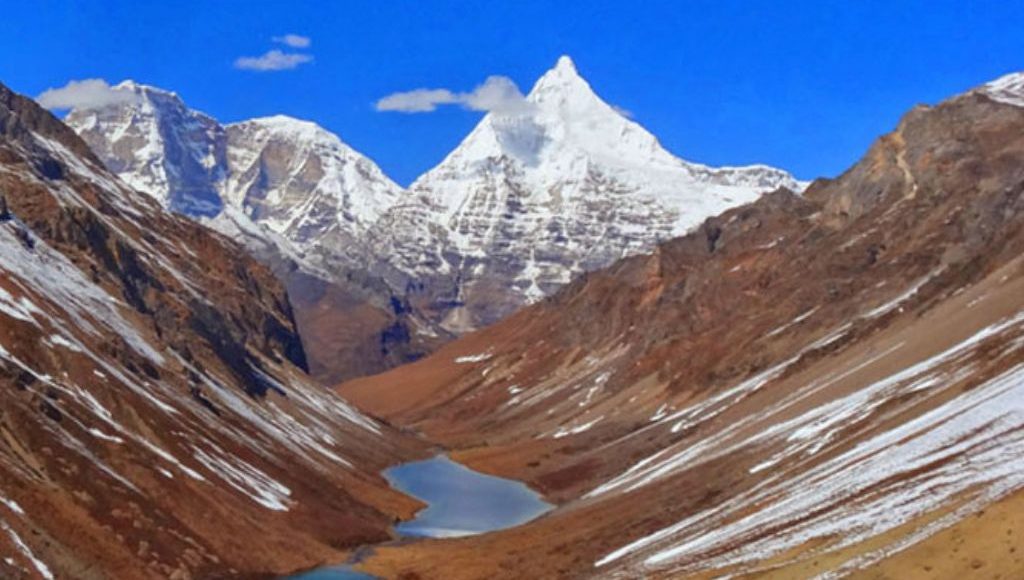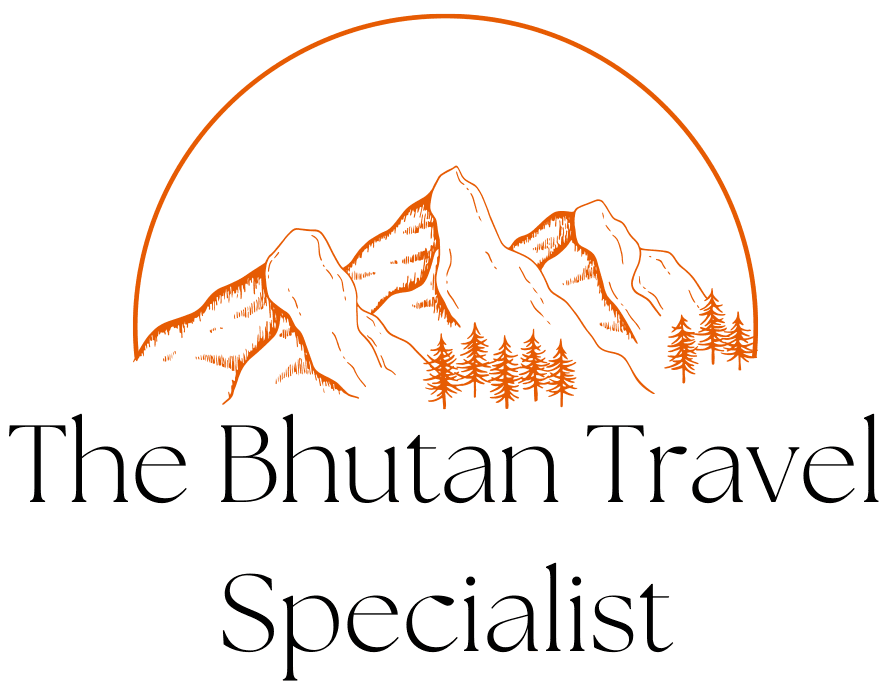Do not hesitate to give us a call. We are an expert team and we are happy to talk to you.
(+975) 17953762

Overview:
Embark on a 17-day journey of awe-inspiring landscapes and cultural immersion with the Laya Gasa Trek. Starting from Paro, the trek takes you through diverse terrains, charming villages, and high mountain passes, providing breathtaking views of Bhutan’s pristine beauty. Explore historical sites in Paro, including the iconic Tiger’s Nest, and then embark on the trek, encountering remote villages, glacial lakes, and high mountain campsites. The trek leads to the picturesque Laya village, the second-highest settlement in Bhutan, offering a unique cultural experience. The journey continues through enchanting landscapes, concluding with a visit to the hot springs in Gasa and a drive to Punakha and Thimphu. The tour concludes in Paro, leaving you with unforgettable memories of Bhutan’s natural and cultural wonders.
Tour Highlights:
1. Paro Exploration: Discover Paro’s cultural treasures, including Rimpung Dzong, Kyichu Lhakhang, and an exhilarating hike to the Tiger’s Nest Monastery.
2. Druk Path Trek: Embark on a 15-day trek through diverse landscapes, including alpine meadows, high mountain passes, and picturesque valleys.
3. Jangothang Rest Day: Enjoy a rest day in Jangothang, allowing for acclimatization and optional day hikes with stunning views of lakes and snow-capped mountains.
4. Cultural Villages: Visit culturally rich villages like Chebisa, Laya, and Koena, providing insight into the unique traditions and lifestyles of the Bhutanese people.
5. Gasa Hot Springs: Relax at Gasa Tshachu, a natural hot spring, offering a therapeutic experience amidst scenic surroundings.
6. Punakha Dzong: Explore Punakha Dzong, one of Bhutan’s most beautiful fortresses, showcasing impressive architecture and cultural significance.
7. Thimphu Exploration: Discover Thimphu, the capital city, with leisure time for exploration and cultural experiences.
8. Scenic Drives: Enjoy picturesque drives through Bhutan’s landscapes, including the stunning Dochu-La pass with panoramic Himalayan views.
Paro International Airport (Google Map)
Arrive in Paro, where our friendly representative will welcome you and accompany you to your hotel. After a delicious lunch, we’ll visit the impressive 17th-century Rimpung Dzong, a historical fortress and the heart of civil and religious administration in the Paro valley. Take a leisurely walk across a traditional wooden bridge to reach Kyichu Lhakhang, one of the oldest and holiest shrines in Bhutan. In the evening, explore the charming town of Paro.
Stay overnight in Paro.
Start your day with a hearty breakfast before embarking on an exhilarating hike to the Tiger’s Nest Monastery, also known as Taktsang Goemba. This iconic attraction in Paro is perched on a cliff at 3180m and offers breathtaking views. The hike takes approximately 2-3 hours each way. Explore the monastery and then trek back to Paro.
Stay overnight in Paro.
Today, our trek begins from the ruins of Drugyal Dzong at 2300m. We’ll walk along a wide trail, descending gently through picturesque rice terraces, millet fields, apple orchards, and forests. Passing Gunitsawa village and an army post, we’ll reach our campsite, located on the other side of the river, not far from Gunitsawa. Enjoy the peaceful surroundings.
Camp at 2850m.
Continue your trek today, encountering small ups and downs along the way. After trekking uphill through the river valley, the trail narrows and descends to a beautiful meadow, where we’ll set up camp at 3750m. If weather permits, you’ll be treated to stunning views of Mt. Jumolhari.
Today, our trek takes us up the Paro Chhu valley, passing through alpine meadows and forests. Enjoy the sight of high mountain ridges and snow-capped peaks as we cross an army checkpoint. The landscape will be dotted with yaks and their herders’ homes. Passing several villages, we’ll arrive at Jangothang, one of the most stunning campsites in the Himalayas, offering breathtaking views of Mount Jumolhari and Jichu Drake.
Take a day to rest and acclimatize in Jangothang. You’ll have plenty of opportunities for day hikes with incredible views of lakes and snow-capped mountains like Jumolhari and Jichu Drake. Keep an eye out for blue sheep on the slopes. Optionally, you can trek to Tsophu Lake or explore the surrounding area.
Today’s trek leads us to the first ridge with a magnificent view of Jumolhari, Jichu Drake, and Tshering Gang. We’ll then descend to a valley and gradually climb to the Ngye-La pass at 4830m. After crossing the pass, we’ll descend gradually to the Lingshi camp, enjoying panoramic views of the peaks and Lingshi Dzong.
We’ll start by reaching a Chorten below Lingshi Dzong and then have the option to visit the dzong, perched on a high ridge. The day’s trek is pleasant and easy, passing through villages and yak herders’ camps. After reaching Chebisa, you’ll have ample time to explore the village houses and visit a stunning waterfall located nearby.
Today’s trek begins with a climb behind Chebisa Village, leading to Gobu La pass at 4420m. Along the way, we may encounter yaks and herds of blue sheep. After crossing the pass, we descend into a U-shaped valley called Shakshepasa. From there, we’ll climb a bit before reaching the campsite at Shomuthang, located above a tributary of the Nochu river.
We start the day by climbing up the valley, surrounded by beautiful Edelweiss flowers. Along the way, we’ll catch glimpses of Kang Bum, a snow-capped peak, and the Great Tiger Mountain. After trekking for about two hours, we’ll reach Jhari La pass, where we can enjoy breathtaking views. Continuing on, we’ll reach the campsite at Robluthang, situated in a rocky meadow.
Today’s trek includes a challenging climb to Shingela pass at 5010m, offering stunning mountain vistas. As we descend, we’ll encounter a magnificent terminal moraine and a glacial lake. Trekking through the Kango Chhu, we’ll finally reach the Lingmithang campsite, with the impressive peak of Gangchhenta in the background.
Wake up to a mesmerizing view of Gangchhenta peak. The walk to Laya is delightful, passing through a damp forest teeming with moss and melodious birds. Reach Laya village, the second-highest settlement in Bhutan, at 3850m. Enjoy the breathtaking vistas of Mt. Gangchhenta and Mt. Masagang from the village.
Descend to an army camp and follow the Mo Chhu river until we cross a bridge. The trail will take us up and down through juniper and fir forests. Eventually, we’ll arrive at the campsite in Koena at an altitude of 3800m.
Embark on a walk across flat terrain to the Barila La pass at 4100m. From there, it’s a downhill journey to Gasa Tshachu, a hot spring where you can relax and enjoy its therapeutic properties. Experience the charm of Gasa village and spend the night at the campsite.
Drive from Gasa to Punakha, passing through scenic agricultural benches and a lush semi-tropical gorge filled with banana trees. Visit the magnificent Punakha Dzong, one of Bhutan’s most beautiful fortresses. Enjoy your overnight stay in Punakha.
Depart Punakha for Thimphu, making a stop at Dochu-La pass to admire the breathtaking Himalayan views. Check into your hotel in Thimphu and spend the afternoon exploring the capital city at your leisure.
After breakfast, take your time to relax before being escorted to Paro International Airport for your departure flight. We hope you had an incredible trekking experience and look forward to serving you again in the future.
There are 19 languages spoken in Bhutan, but the national language is Dzongkha. English is used throughout Bhutan’s education system, so it is widely used and understood.
Bhutan is a year-round destination. There are four seasons: summer (June to August), autumn (September to November), winter (December to February) and spring (March to May). But because of the range of altitudes in the country, and the influence of the north Indian monsoons, the climate is incredibly varied.
In the south, the humid, subtropical climate is fairly consistent year-round, with temperatures between 15oC and 30oC. Central Bhutan, with its temperate forests, has a more seasonal climate, with warm summers and cool, dry winters. The northern regions are much colder during winter. Because of the high altitude, mountain peaks are snowy year-round and the lower reaches remain cool in summer.
In summer, the Indian monsoon season runs from late June or July to late September, mostly affecting the southern regions. Most farming activities take place in the summer, when crops thrive in verdant landscapes.
Autumn, from late September or early October to late November, follows the rainy season. It is characterised by bright, sunny days and some early snowfall at higher elevations. It’s the season of feasts and festivals as farmers reap the fruits of their work.
From late November until March, the crisp, clear and sunny winter sets in, with frost throughout much of the country and snowfall common above elevations of 3,000 metres. The winter northeast monsoon brings gale-force winds at the highest altitudes through high mountain passes, giving Bhutan the name Drukyul, which means Land of the Thunder Dragon in Dzongkha (Bhutan’s national language).
Bhutan’s generally dry spring starts in early March and lasts until mid-April. It is a botanist’s delight, with nature in full bloom. Summer weather commences in mid-April with occasional showers and continues to late June.
Bhutan’s currency is called ngultrum. It’s 1:1 with Indian rupees.
Three different electrical plugs are used throughout Bhutan: the British plug (three square pins, compatible with type G sockets), the European plug (two round pins, compatible with type C socket) and the Indian plug (three thick round pins, compatible with type D sockets). It’s a good idea to bring adaptors for all three.
For telephone calls, Bhutan’s country code is +975. Make sure you add this to the beginning of any number if calling Bhutan from abroad.
You can apply online for a visa by completing this application form, or if you’re travelling with a tour operator, they may apply on your behalf. Read more about the visa here.
Visitors from Bangladesh and the Maldives requiring a visa can apply either online before travelling or in person upon arrival in Bhutan.
There is a one-off fee of US$40 for the processing of your application. This is payable at the same time as your Sustainable Development Fee (SDF), as part of the process of submitting your visa application.
The SDF is USD 100 per night for adults from all countries except for India. Children aged between 6 years and who have not yet turned 12 are eligible to pay USD 50 per night. Children who have not yet turned 6 years old do not have to pay any SDF.
The SDF for Indian nationals (showing a valid Indian passport or Voter ID card) is Nu. 1,200 (or the equivalent amount in Indian rupees) per person, per night. Children aged between 6 years and who have not yet turned 12 are eligible to pay Nu./INR 600 per night. Children who have not yet turned 6 years old do not have to pay any SDF.
Tourists visiting Samtse, Phuentsholing, Gelephu, and Samdrupjongkhar towns for 24 hours need not pay Sustainable Development Fee (SDF) beginning April 14, 2023. The waiver will be enforced for a year. The SDF waiver will only apply for tourists who do not travel beyond the designated zones of border towns. However, SDF will apply for visitors who travel beyond the designated zone of border towns.
Tourists will be charged SDF if they go beyond Gurung Basti in Samtse, and beyond Rinchending Checkpost in Phuentsholing. The designated zone in Gelephu is at Aipoli Bridge and Pinchinna checkpost in Samdrupjongkhar.
